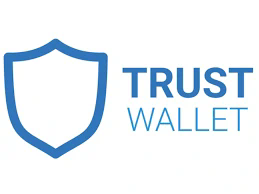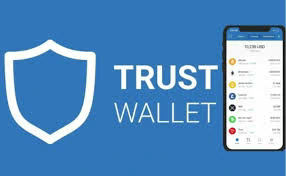How to Convert NFTs to Fiat Currency: A Comprehensive Guide
In recent years, Non-Fungible Tokens (NFTs) have surged in popularity, revolutionizing the way we perceive and value digital assets. As digital collectibles, artworks, and virtual possessions gain traction in the mainstream market, many owners find themselves interested in converting their NFTs into fiat currency—government-backed money like the US dollar or Euro. This article delves into the nuances of how one can achieve this conversion, exploring both the technical and conceptual frameworks that surround NFTs, cryptocurrency, and fiat transactions.
### Understanding NFTs and Their Value
#### What Are NFTs?
NFTs are unique digital tokens that exist on a blockchain, typically the Ethereum blockchain, although other blockchains support NFTs as well. Unlike cryptocurrencies like Bitcoin or Ethereum, which are fungible and can be exchanged on a one-to-one basis, NFTs represent unique items or assets. This uniqueness ensures that an NFT cannot be replicated, making each token distinctly valuable.
#### The Art and Asset of NFTs
NFTs serve diverse purposes, including digital art, music, virtual real estate, collectibles, and even intellectual property rights. Artists and creators can tokenize their work to sell directly to consumers, establish provenance, and unlock new revenue streams, breaking the traditional art market’s constraints. This shift has generated interest from investors and collectors, transforming NFTs into products with substantial price tags, sometimes reaching millions.
### Why Convert NFTs to Fiat Currency?
Converting NFTs to fiat currency can serve various purposes for their owners:
1. **Liquidating Assets**: NFTs, despite their enigmatic value, represent illiquid assets. Converting them to fiat enables owners to access cash or reinvest in other opportunities.
2. **Real-World Expenses**: Owners may require cash for day-to-day expenses, bills, or other financial commitments. Converting NFTs into fiat makes it easier to fund these needs.
3. **Market Volatility**: The NFT market can be highly volatile. By converting to fiat currency, owners can hedge against potential downturns in the value of their assets.
### Steps to Convert NFTs to Fiat Currency
#### Step 1: Determine the Value of Your NFT

Before beginning the conversion process, owners should accurately assess their NFT’s market value. This often involves researching recent sales of similar tokens, evaluating provenance, rarity, and current market trends. Sites like OpenSea, Rarible, and other NFT marketplaces provide valuable insights into pricing trends and confirmed sales.
#### Step 2: Choose an NFT Marketplace
Choosing a reliable NFT marketplace is crucial for an efficient conversion process. Notable platforms include:
– **OpenSea**: One of the largest NFT marketplaces supports a wide variety of NFT types.
– **Rarible**: A decentralized marketplace that allows users to create, buy, and sell NFTs.
– **Foundation**: A community-curated marketplace focusing on high-quality artworks.
– **SuperRare**: Exclusively for digital art with a strong emphasis on verified artists.
Select a marketplace based on the type and value of your NFT, ensuring it has an adequate user base to facilitate the sale quickly.
#### Step 3: Create an Account and Set Up a Wallet
Most NFT marketplaces require users to register for an account and connect a cryptocurrency wallet. Popular wallets include:
– **MetaMask**: A widely-used browser extension wallet compatible with various decentralized applications (dApps).
– **Coinbase Wallet**: A user-friendly wallet option for those well-versed in the Coinbase ecosystem.
– **Trust Wallet**: A mobile wallet that supports a multitude of cryptocurrencies and tokens.
Ensure your wallet can interact with the marketplace of your choice and that you’ve configured the necessary Ethereum (or other blockchain) to cover transaction fees.
#### Step 4: List Your NFT for Sale
Once your wallet is set up and connected to your chosen NFT marketplace, you can list your NFT for sale. This process generally involves selecting your NFT, setting a price, and making it publicly available for buyers on the platform.
Tips for Listing:
– Set a realistic price based on market trends and precedents.
– Consider auctioning your NFT to generate competitive interest.
– Provide compelling descriptions and qualities to attract potential buyers.
#### Step 5: Sell and Collect Cryptocurrency
Once a buyer purchases your NFT, the transaction will be conducted in cryptocurrency, typically Ether (ETH) if using an Ethereum-based marketplace. Ensure your wallet is capable of receiving the cryptocurrency.
1. **Transaction Confirmation**: Wait for the transaction to confirm on the blockchain, which may take a few minutes to hours, depending on network conditions.
2. **Receiving Funds**: Once completed, the cryptocurrency will be in your wallet.
#### Step 6: Convert Cryptocurrency to Fiat Currency
To convert the received cryptocurrency into fiat currency, you can follow these steps:
1. **Select a Cryptocurrency Exchange**: Choose a reputable cryptocurrency exchange that supports fiat withdrawals, such as Binance, Coinbase, Kraken, or Bitstamp. Different exchanges have different fiat supports and regulations depending on your country.
2. **Deposit Cryptocurrency**: Transfer your received cryptocurrency from your wallet to the exchange. Ensure you double-check wallet addresses to avoid loss of funds.
3. **Execute a Trade**: Once the cryptocurrency is on the exchange, navigate to the trading platform to exchange your crypto for fiat currency. This generally involves selecting the cryptocurrency you wish to sell and the fiat currency you wish to receive.
4. **Withdraw Fiat Currency**: After the trade is completed, you can withdraw your fiat currency to your bank account. This process may take a few days depending on the exchange and banking regulations.

### Important Considerations and Risks
#### Market Volatility
The value of NFTs and cryptocurrencies can be highly volatile. It’s essential to be aware of the market trends and potential fluctuations that could affect the price of the NFT you wish to sell and the cryptocurrency you receive.
#### Taxes and Regulations
Many regions have instituted regulations regarding the sale of NFTs and cryptocurrency transactions. Potential sellers should familiarize themselves with tax implications as profits from NFT sales may be taxable. Conversely, losses may also be deductible. Consulting with a financial advisor with expertise in cryptocurrencies is advisable.
### Conclusion
Converting NFTs to fiat currency entails a multifaceted process, from determining an NFT’s market value to selecting the right marketplace, successfully selling the NFT, and finally navigating the exchanges for fiat conversion. As the digital landscape evolves, staying informed about market practices, regulatory frameworks, and best practices will serve NFT owners in liquidating their unique digital assets effectively.
By adapting to the dynamic environment of the crypto asset space, NFT owners not only gain access to invaluable liquidity but also open avenues to harness the growing popularity and utility of digital assets in the broader economic landscape. This convergence of art, technology, and finance heralds a new era of asset ownership, representation, and financial activity that is fundamentally transforming industries across the globe.


